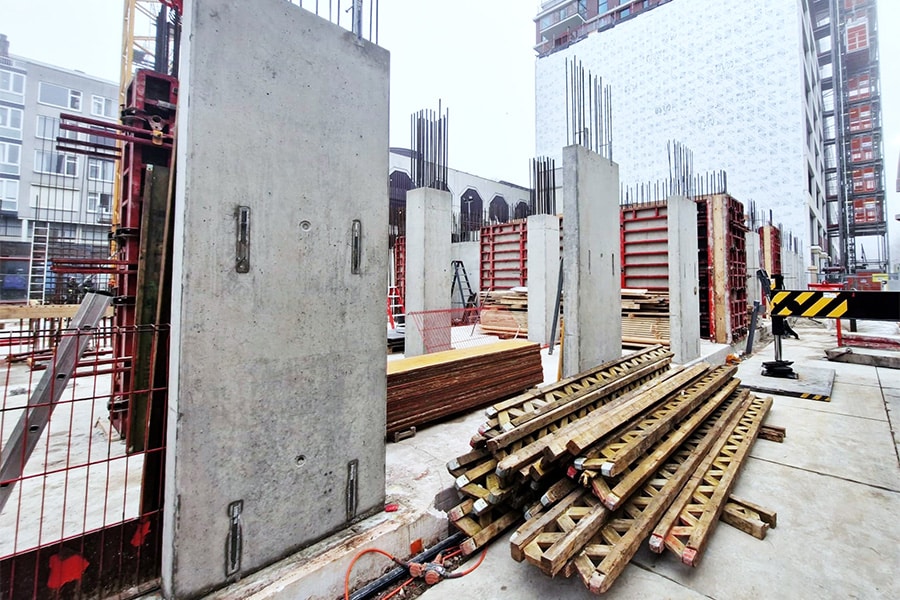
An ERP system for the concrete industry
Concrete construction mainly relates to the production of concrete components. Besides production, the spectrum ranges from the preparation and installation of the components to the processing and post-treatment of the concrete. For this purpose, high-tech and computer-assisted tools are mainly used today to ensure the holistic process. At this point, we would like to focus on the most common functions of a ERP system for the concrete industry and show why they are particularly relevant to everyone in concrete.
Calculations
When costing a specific project, pre-integrated quantity determinations for pricing are performed. Many ERP systems already contain various example data, such as geometry data and time curves for common production parts, from which a separate calculation platform can be developed over time by adding own data. In general, all costs within a calculation, including transportation and assembly, can also be calculated in parts and, for example, each production part can be output as the price per m, m² or m³. It is also possible to determine costs in individual positions. Once the order is placed, the respective terms are simply added to the system and converted into a final order calculation. Work cost calculation can also be easily done through the ERP and included in the respective project cost. Thus, the calculation is already alerted to potential bottlenecks in terms of staffing.
Planning
Coarse and detailed planning is carried out on the basis of a common plan board. Each element is given a fixed location and given a date. The data from the quotation price is used for rough planning. The calculation of work time also flows in at this point and is assigned to the respective work steps. With the planning board, all employees are always aware of the entire production process for a single project.
Object and project management
Well-planned project management is best for any concrete or construction company. Each individual planning step can be assigned to a specific project or object. Moreover, they can be assigned to the respective client, contact person or the employee in charge. These project steps can then also be transferred to their schedules so that changes in appointments or changes in responsibilities are always transparent and understandable to all involved. Process progress is visible and controllable by all employees at all times.
Also, all relevant documents pertaining to a project can be made available to the respective actors at any time, and any changes to them can be tracked at any time through a document management module so that they are always up-to-date. Also other important data we insurance, guarantees, etc. Can be recorded.
Business Intelligence
One of the most important modules is certainly Business Intelligence (BI). All employees of a company receive data, which the module displays in an intuitively operable analysis platform. No further programming knowledge is required for this. Systematic analyses of all procedures and processes in a company are performed. This collection of data is used to evaluate and ultimately optimize these processes. So potential sources of errors, time wasters and irrational processes can be identified and ultimately adjusted. These BI solutions can be used in all areas of the business, be it purchasing, sales or project planning. This improves and optimizes communication throughout the enterprise.
BIM in concrete construction
BIM stands for Building Information Modeling and represents a simulation of a complete building design using software. This can be independent or part of an ERP system. The latter has the advantage that all necessary information is mutually available and thus a complete picture can be created. All relevant data are displayed visually and available to all project participants.
Changes and additions to the building plan are therefore always immediately visible to everyone, and delays in one place that affect other processes are also recalculated and taken into account. In addition to information about the construction project itself, the BIM can also integrate maintenance or data for the entire life cycle of a building. However, a major advantage of BIM is error prevention, and in the future it will probably be difficult to bypass this module.
At this point, we could only talk about a limited number of functions of ERP systems for concrete construction. Countless other modules and functions make an ERP system for concrete construction a reliable and relentless partner. Therefore, it is very important to find an ERP vendor that knows the industry and knows what matters. Through their years of experience, they know where the stumbling blocks are in the introduction, which modules are absolutely necessary and which error sources are bypassed.
You can find more information about an ERP system for the concrete industry, a host of specialized vendors and everything else about ERP systems at www.erpoverzicht.nl




